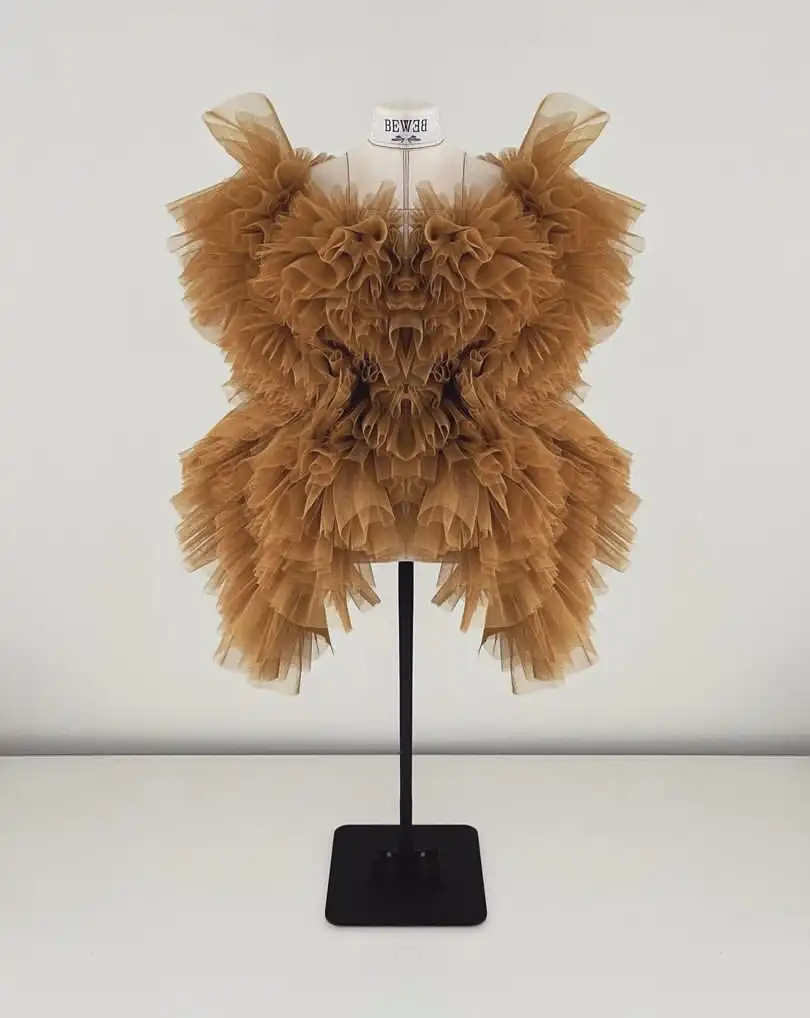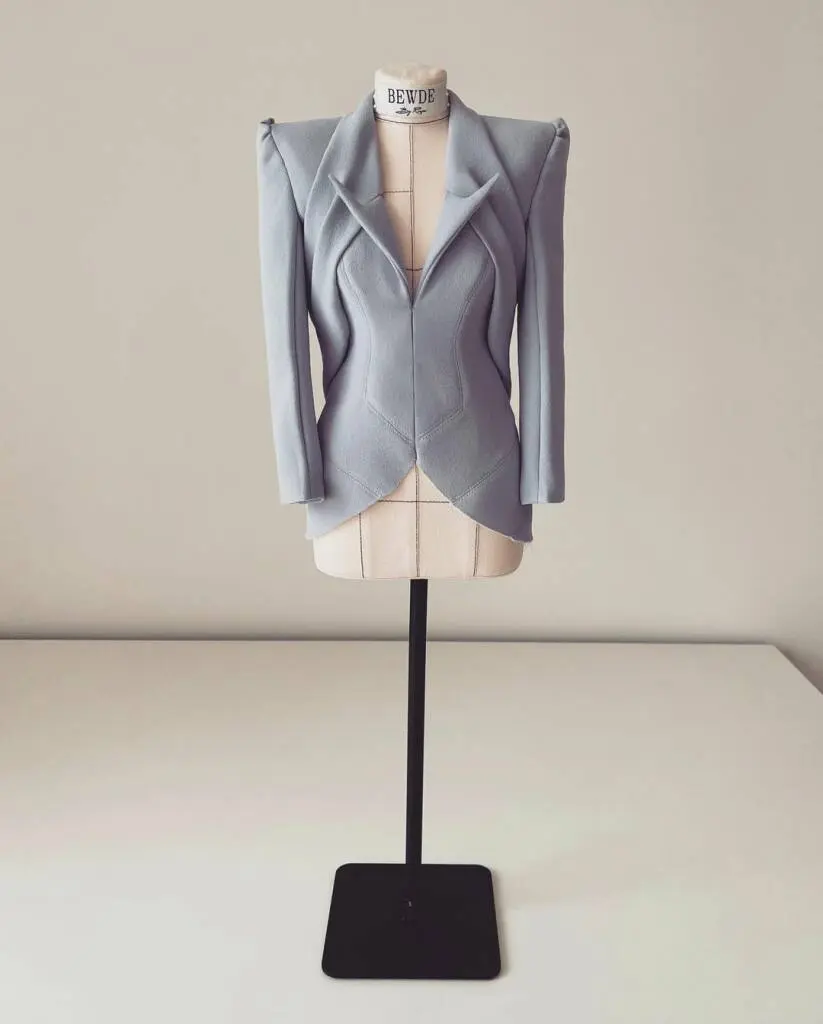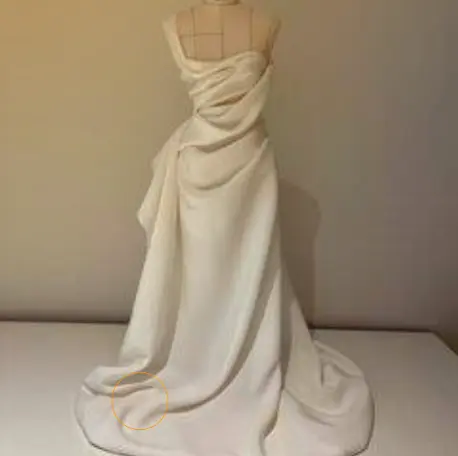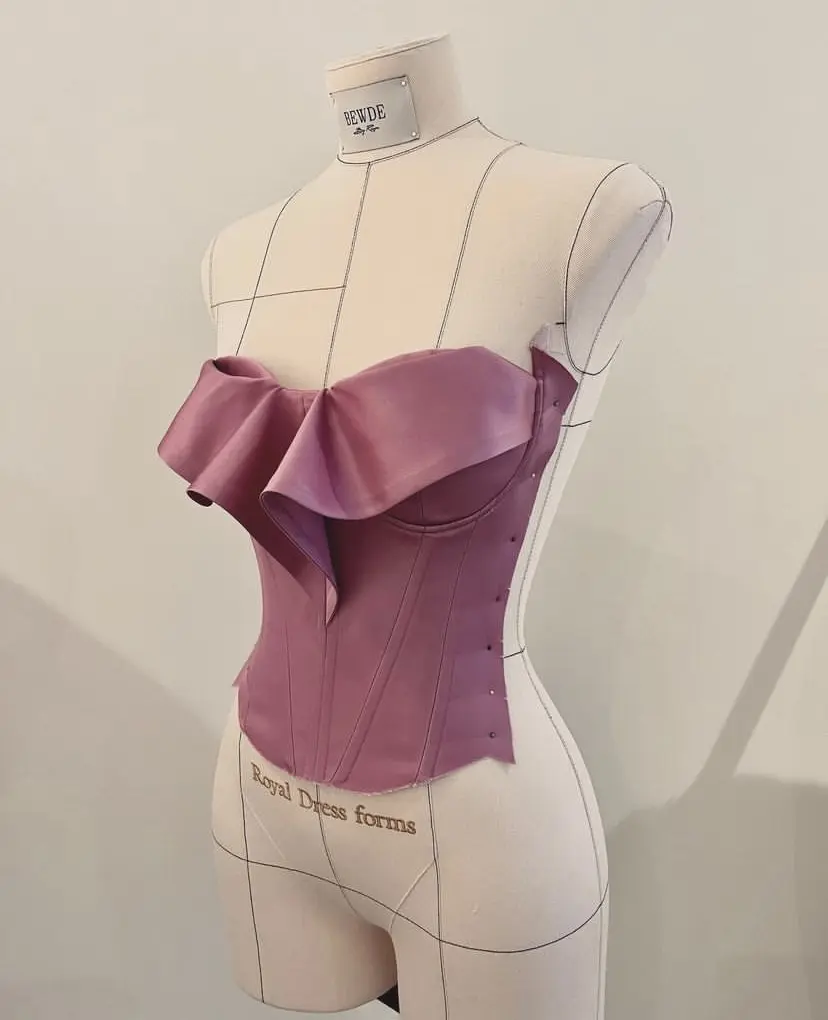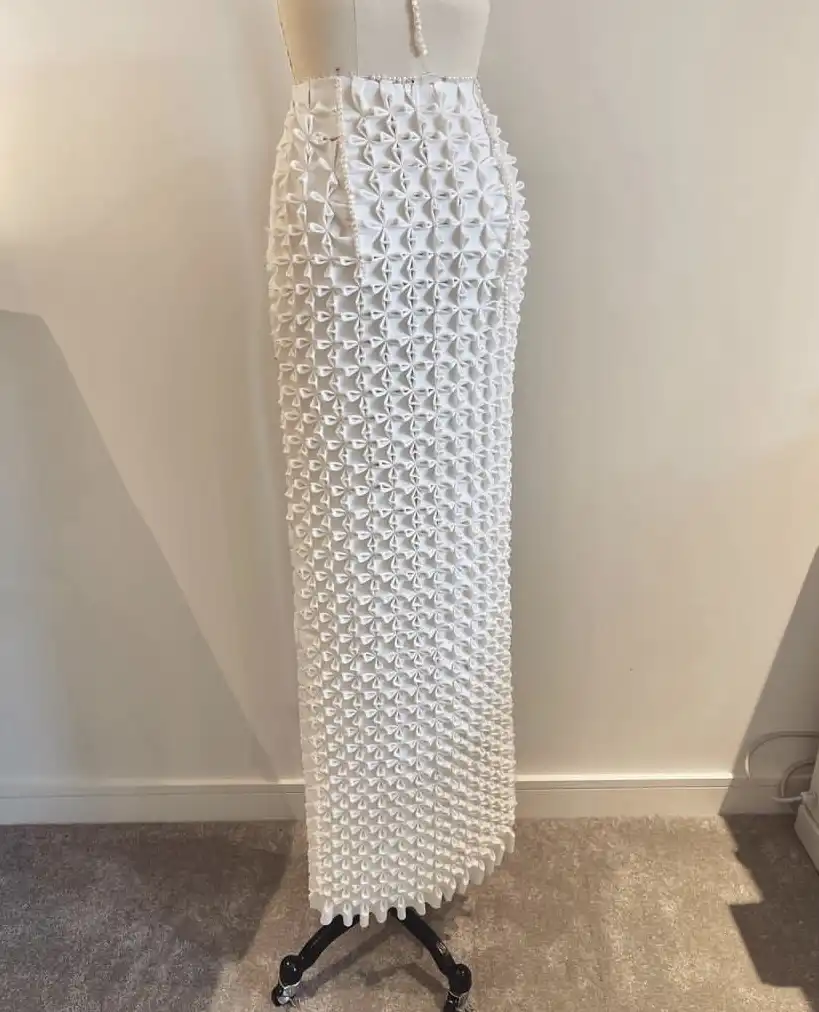I have only recently moved to London this year. As we are very much still a developing brand – I felt that London was just where I needed to be for both contacts and ease of creating with fabric suppliers and materials close by. It’s quite an overwhelming step forward in terms of my intentions for the brand but I love it that way and find challenges most exciting, even though they are stressful!
I get asked this question a lot and there is no singular answer. Pieces vary from design to design – some extremely intricate and others less so but they all have their complexities at different stages and can sometimes take a couple of months to get right.
I would definitely say when a design needs a base garment – this means a whole corseted or shaped structure has to be made either for the creation to be mounted on to, or to support the volume of a feature. From the outside it just looks like a normal piece but from the inside, you have a lining – boned layer – shell layer, just for the under garment, then additionally, your final exterior fabric, lined and faced where necessary. Areas may have interfacing / underwire / hand stitching e.t.c so to the naked eye it seems like just another design but the engineering that goes into them is truly immense and time consuming.
Absolutely, I grew up in the countryside in a small village in Shropshire (England) and my parents worked very hard. My Dad often worked away or came home late from his civil engineering company so my Mum was always there for me. I suppose growing up around her circle of female friends as a young boy and witnessing the way they supported each other and generally just appreciated their time together stuck with me even until now. Each of them inspired me in different ways but it all transpires into emotion and I wanted this to be an integral part of my brand identity. My only goal when creating is to evoke an emotion, regardless of what it is – but the best feeling in the world is watching a woman zip herself into something I have created for her and just watch her glow, admire her reflection in the mirror and burst with excitement because she is wearing something she has never worn before and perhaps never envisioned herself wearing something quite so glamorous or luxurious. That to me, is the best gift of the entire process.
I am torn between these formats, I love ready-to-wear, it satisfies consumerism and that feeling you get when you have stumbled upon something you really like in a store and just buy it right off the rail. It’s amazing – you’re there, you see it, you HAVE to have it – and with the swipe of a card it’s done. But… and it’s a big but, I utterly adore the sentiment and craftsmanship and emotion that is enveloped in couture. I feel as though the customer takes a piece of you when they leave with couture clothing. You have sat and poured your creative vision and skill into fabric and materials for weeks until it has evolved into something truly beautiful and knowing that it will be cherished for years and years to come is just the cherry on top of the cake.
I genuinely believe that couture will have a comeback. Different yes, developed too, but exclusivity is a growing desire and in the younger generation especially, individuality is really important. I think the high street is becoming mundane and everything we see has already been done – it’s been that way for years, and the growing urge to get a handle on climate change is only going to make the grotesquely mass produced lines more frowned upon than they are now. This is absolutely not me saying that couture is green because it’s not – but the impact of one piece when produced by a responsible brand is minimal in comparison to one piece manufactured 20,000 times for the high street.
The digital world is something I wish I had given more time to – everything is becoming virtual and it’s only going to become more prominent but I just don’t see myself getting my head around it or the purpose of it for a couture collection. I’m a very visual person but when it comes to fashion and fabrics in particular – I’m very kinaesthetic and want to feel all of the textures and movement, something that you don’t get through a screen.
It varies depending on the client, sometimes it’s just a photoshoot, other times it’s an event or large scale overseas trip – I also have my fair share of bridal enquiries.
A contemporary and sophisticated aesthetic with architectural accents that accentuate the beauty of the female form.
I think it’s sustainable when it’s created responsibly. I would never create a fur coat for example as it’s tone deaf to portray that as decadence or luxury when it’s such an unnecessary and inhumane way of creating fashion. I think when we channel good intentions, positive change and responsible sourcing – the fashion we create is far less damaging and therefore feels more pure to not only wear but also produce. As soon as designers feel they have to lie or cover up what their fabric is and where it’s come from (if they even know) is the time their brand ideology becomes compromised and their message becomes tainted.

